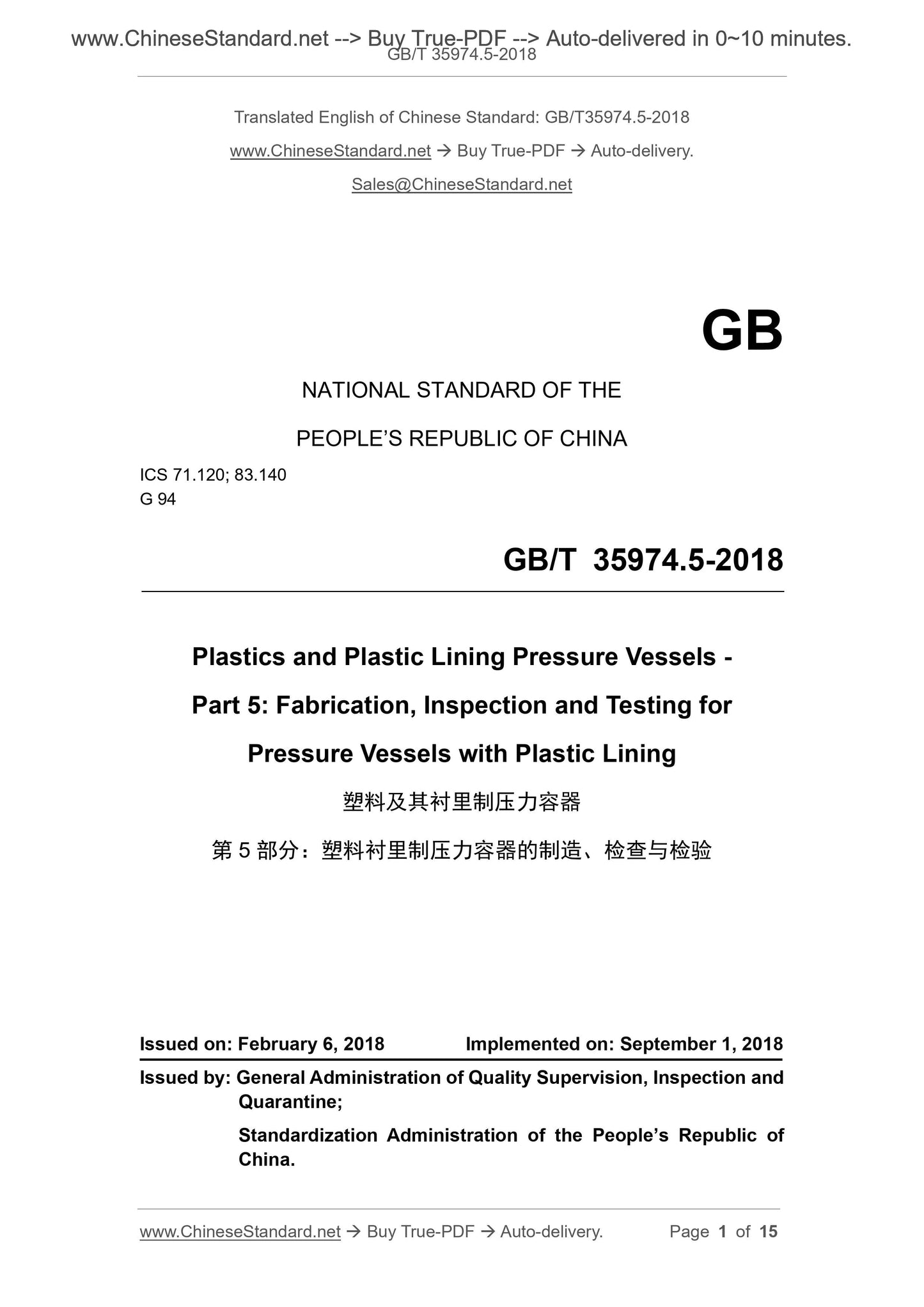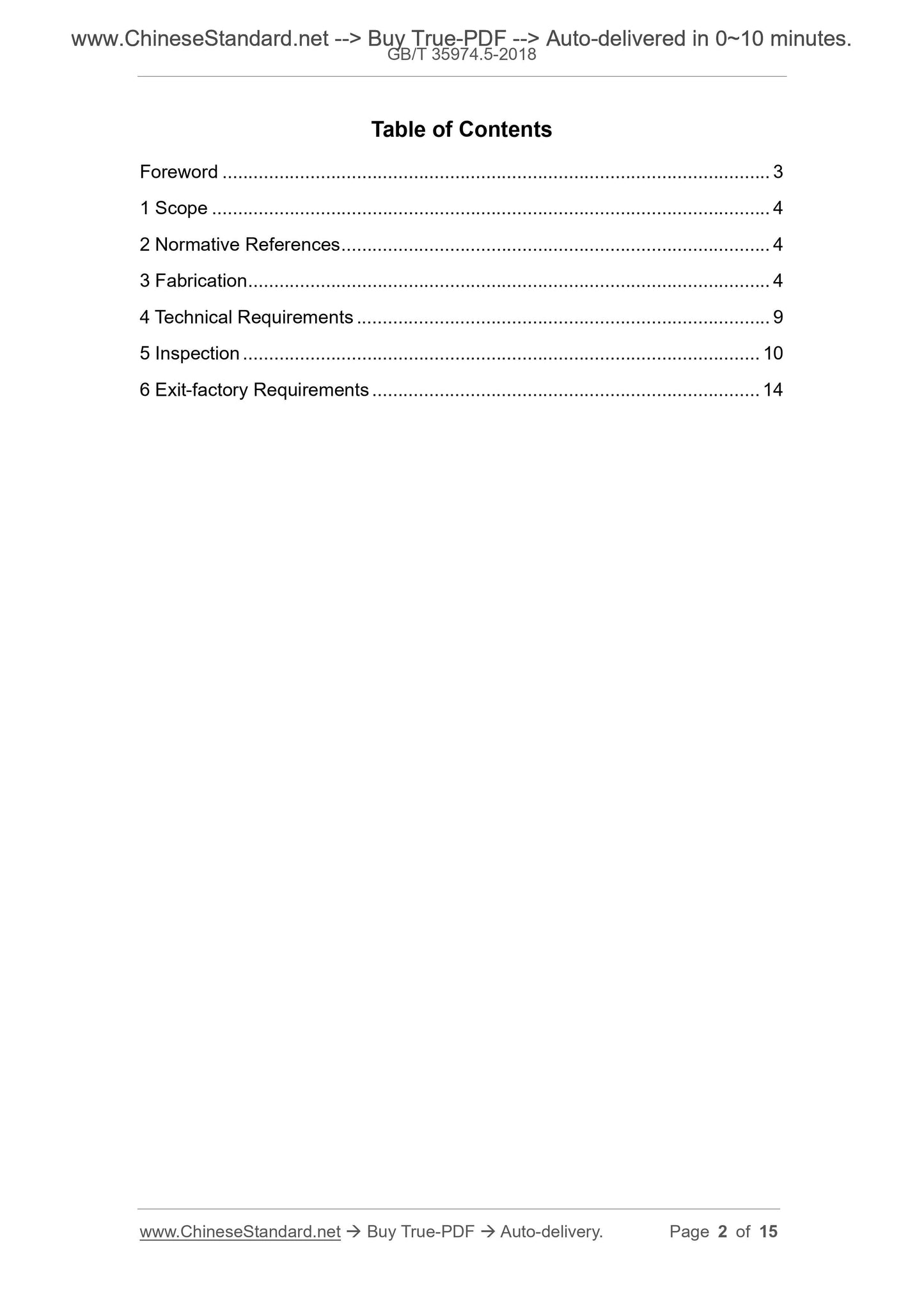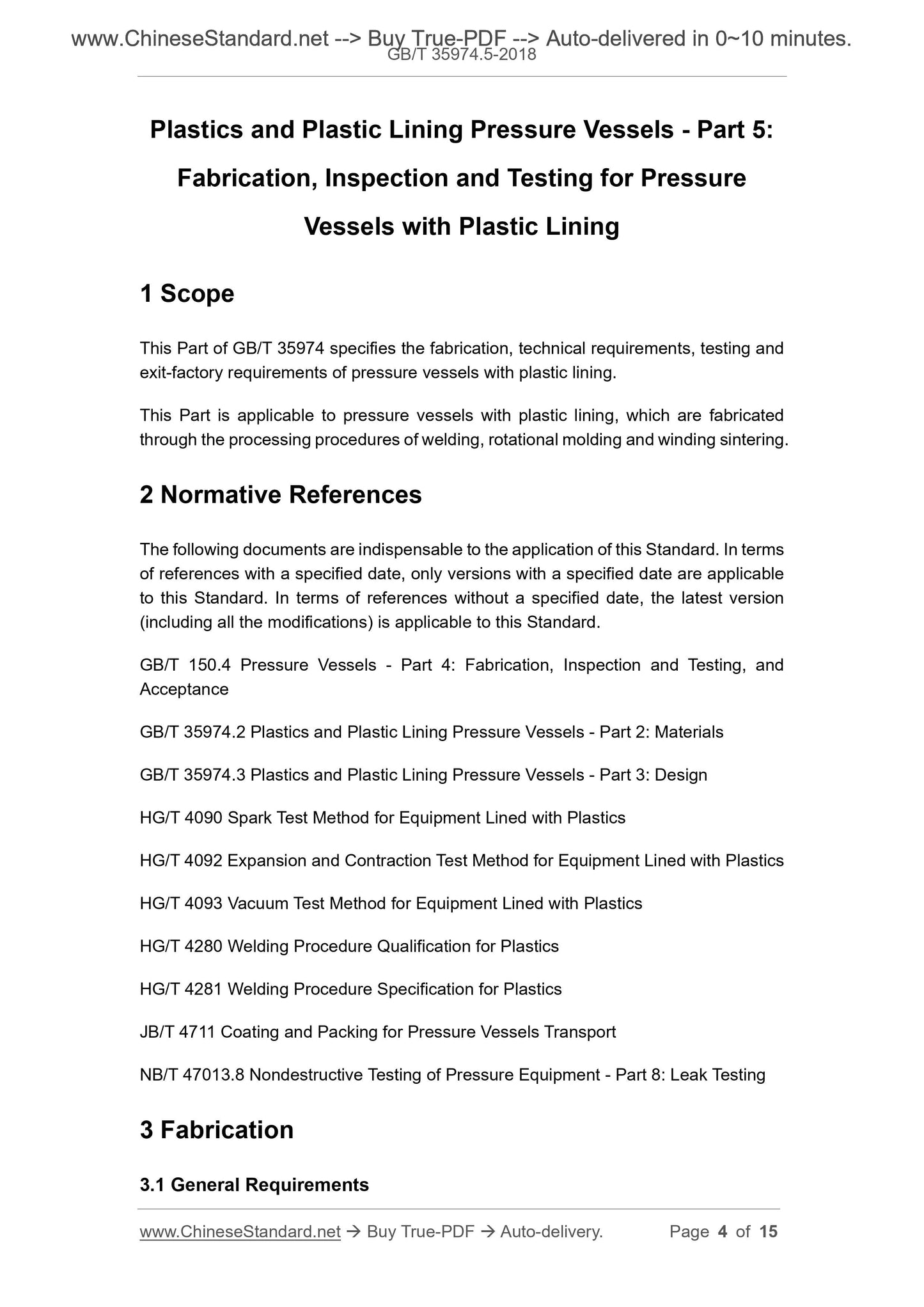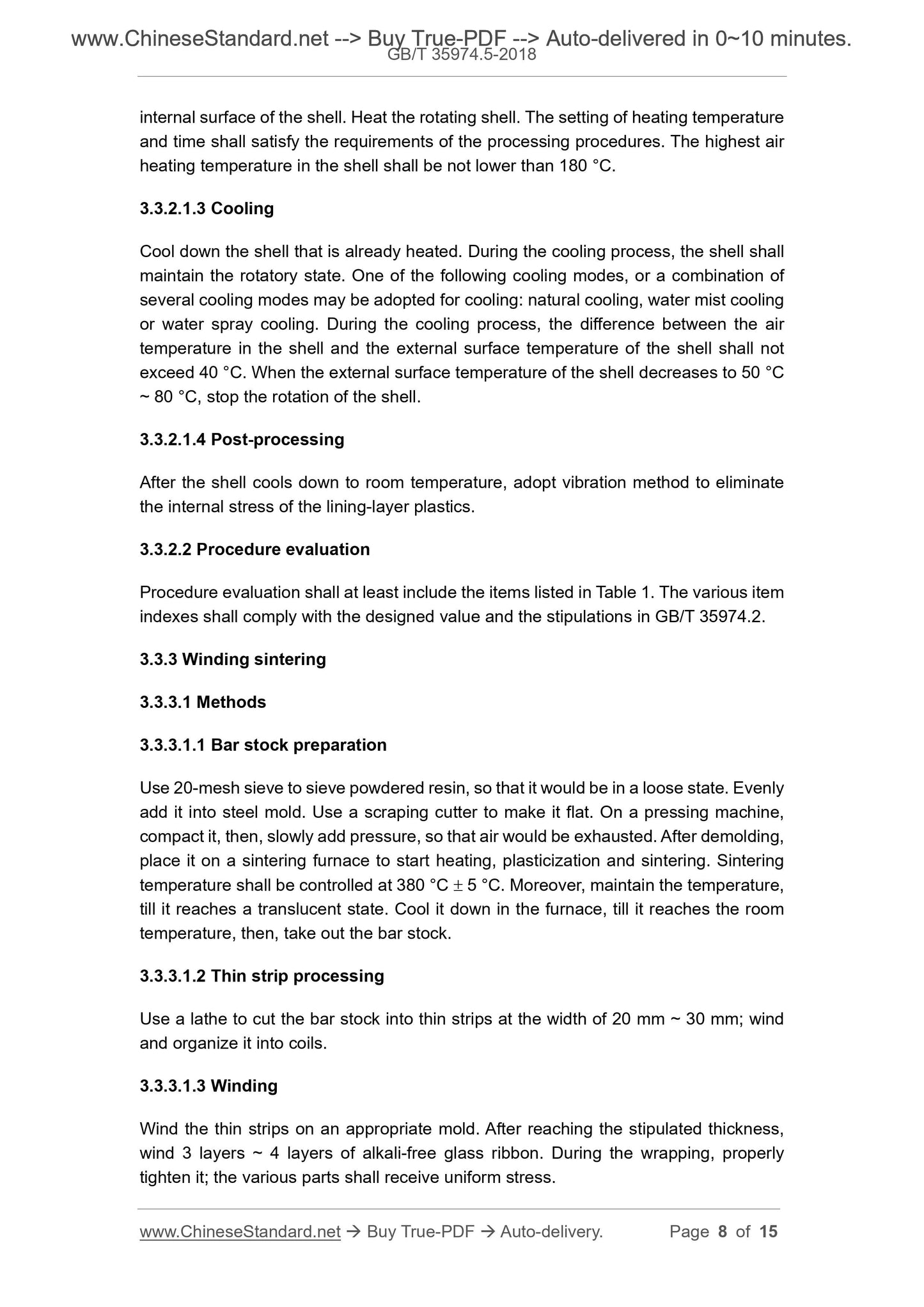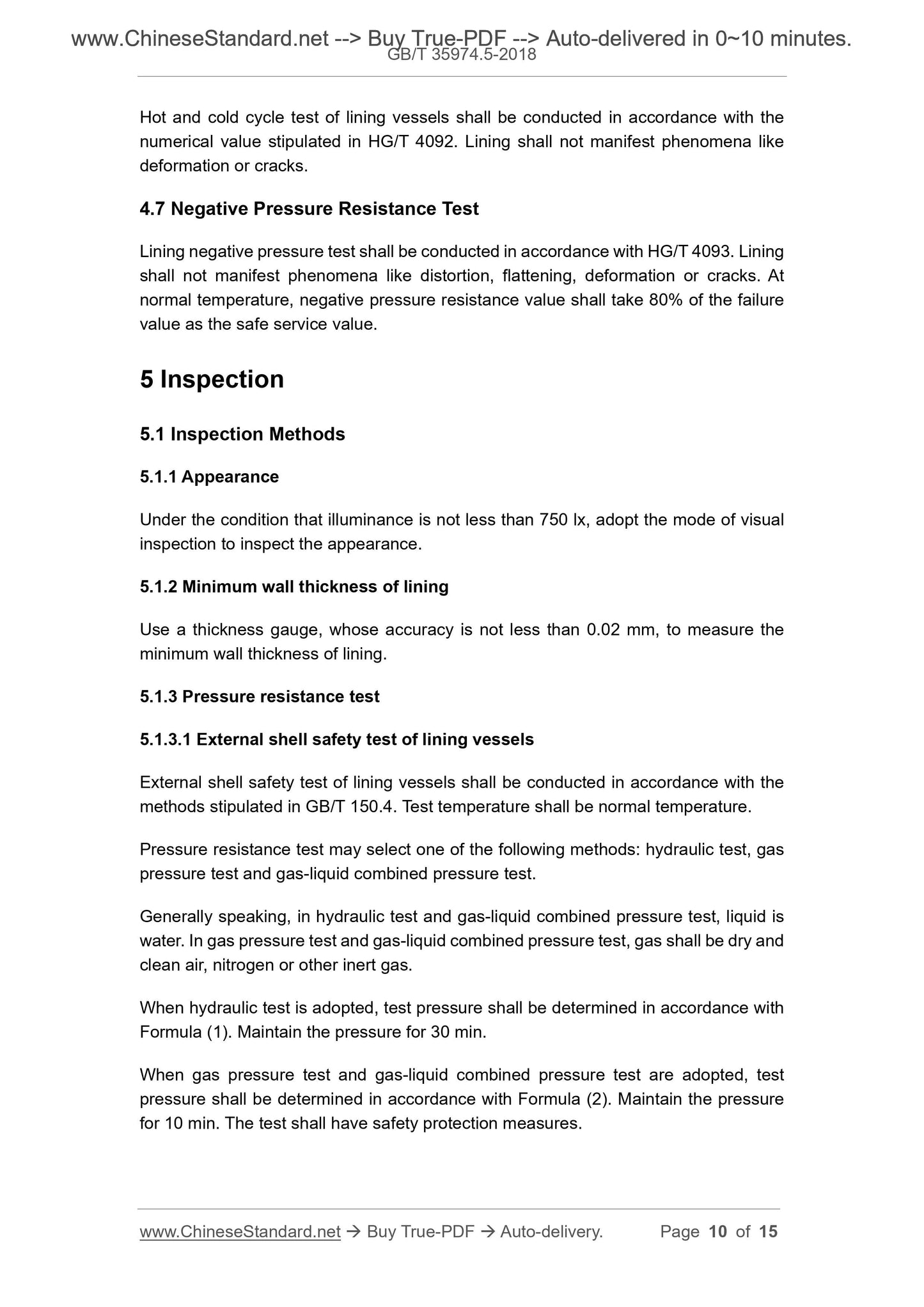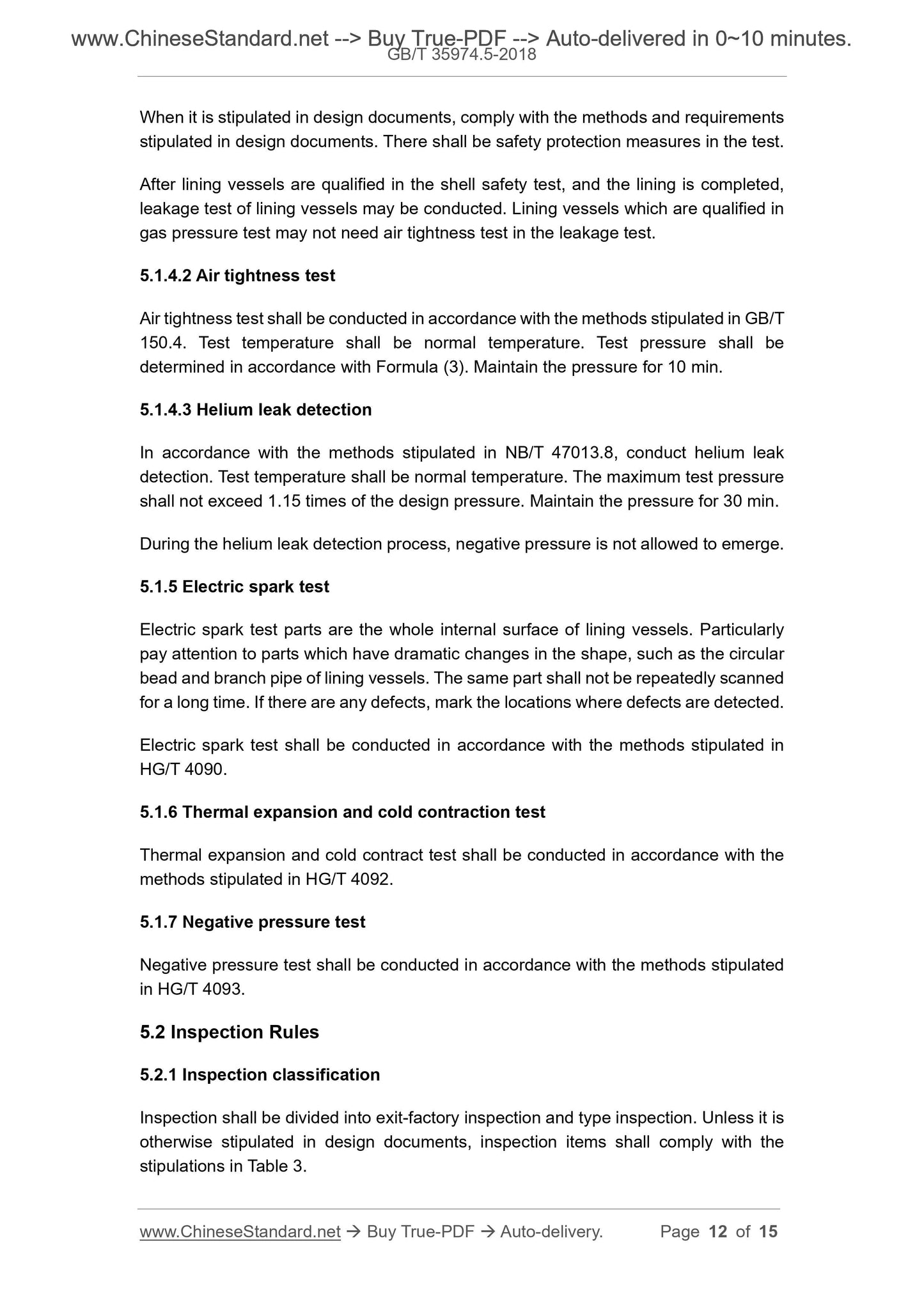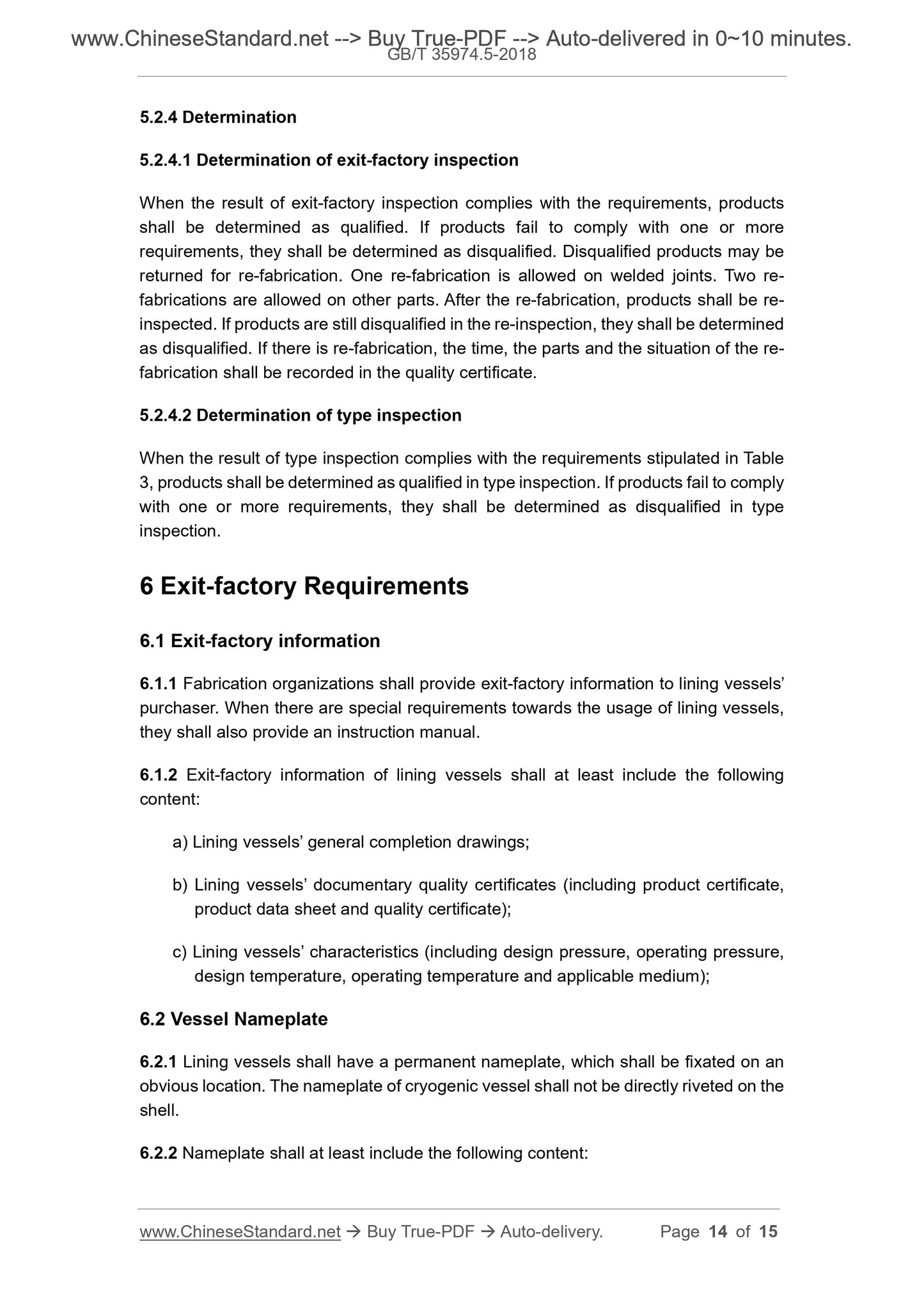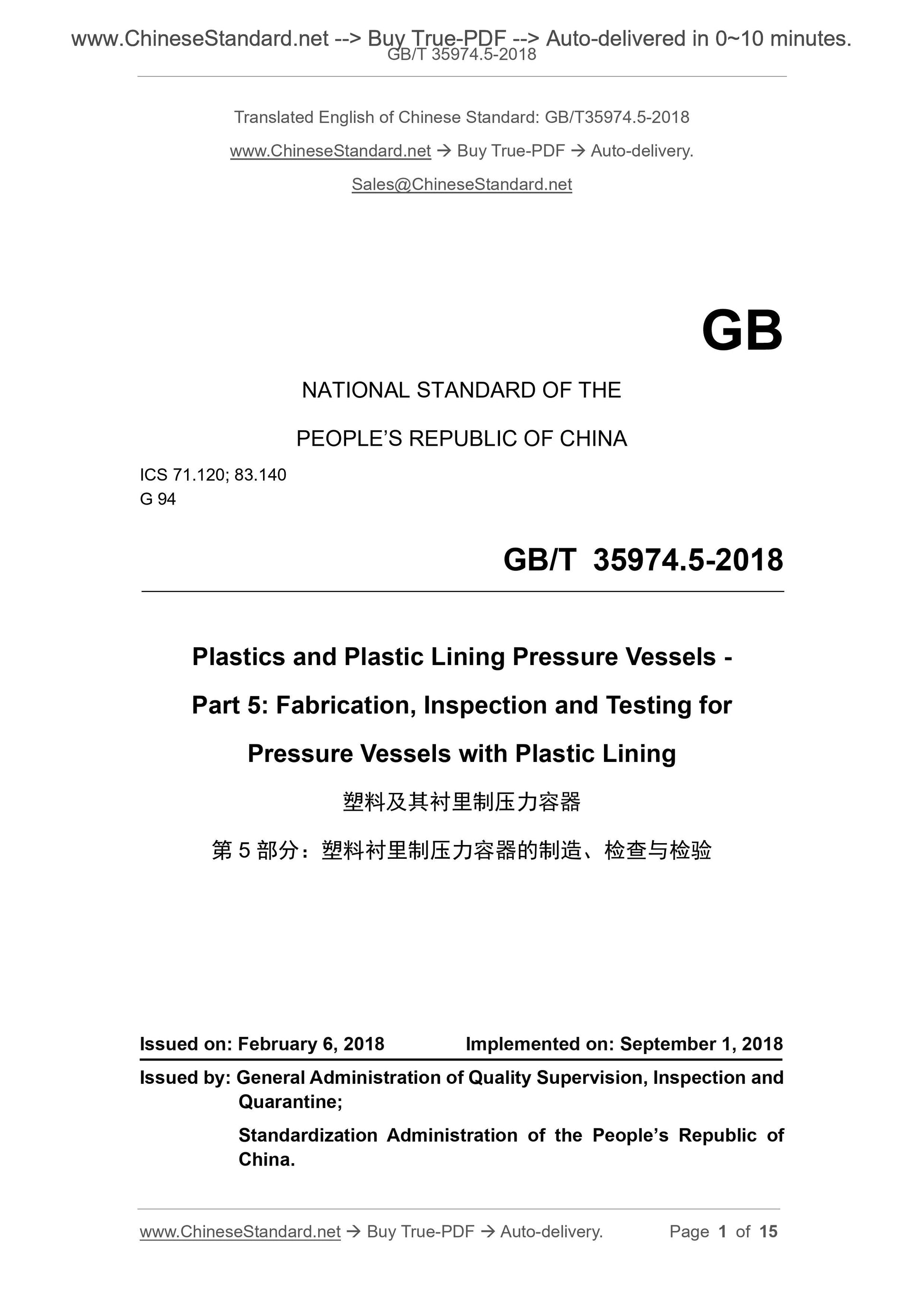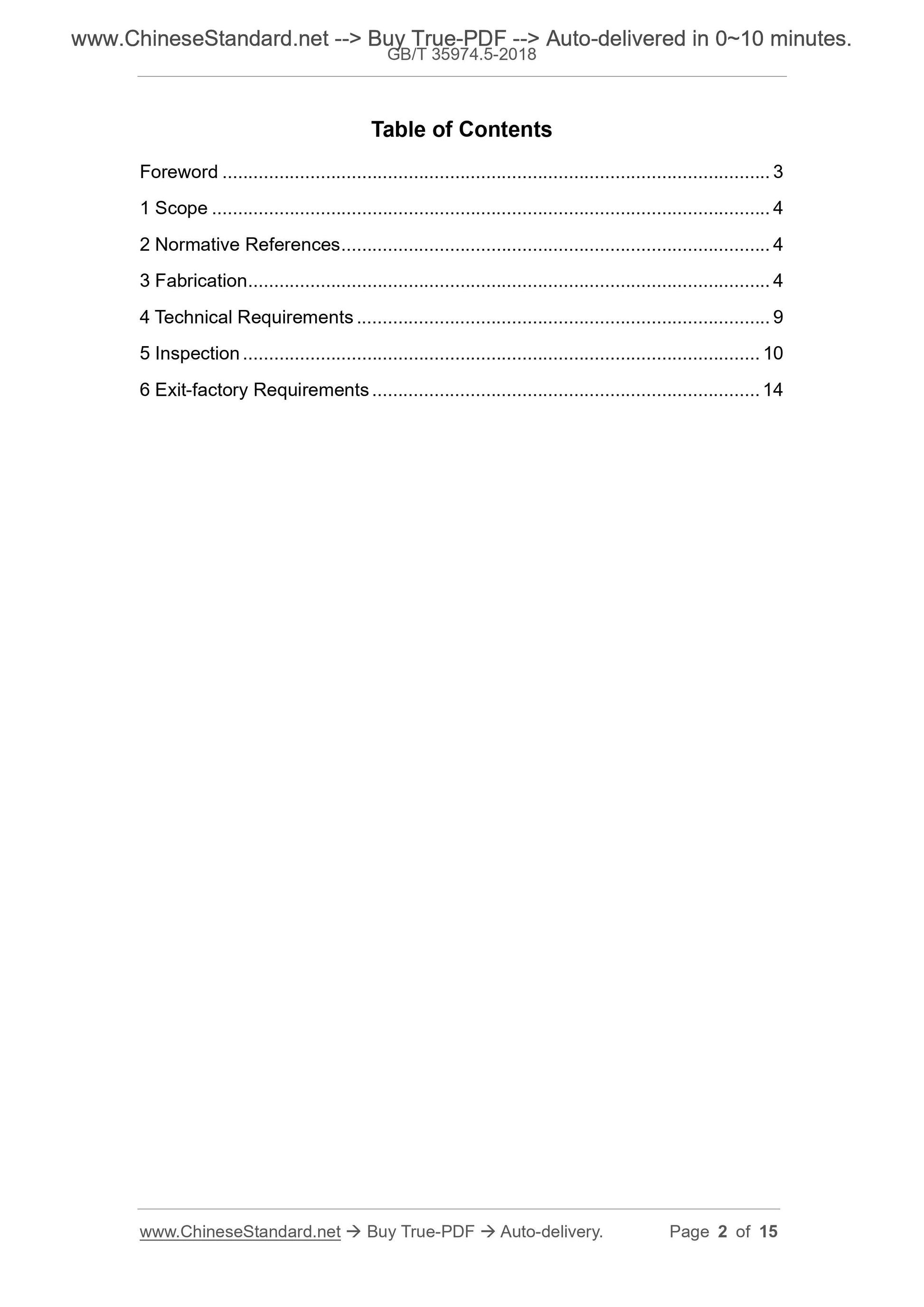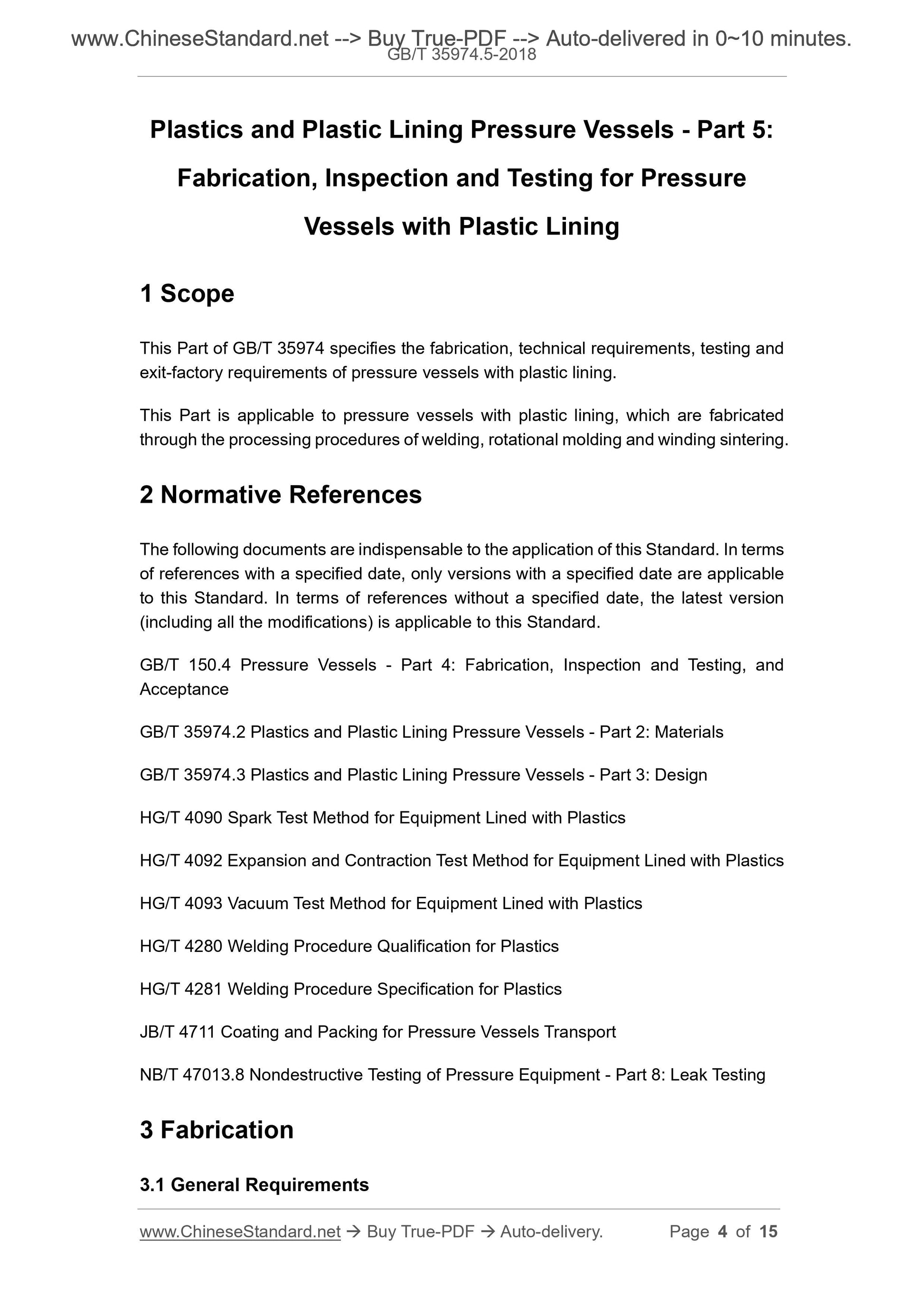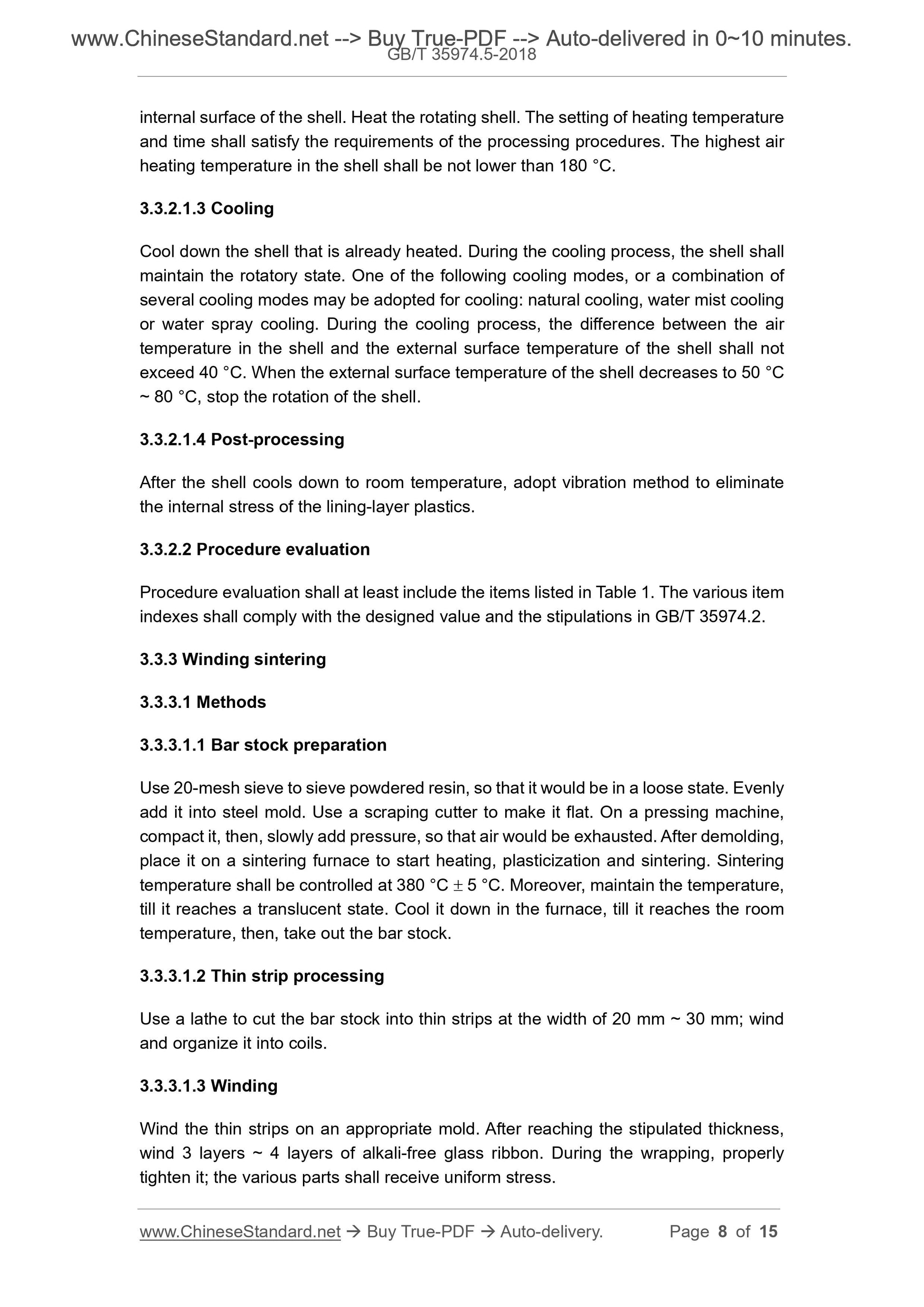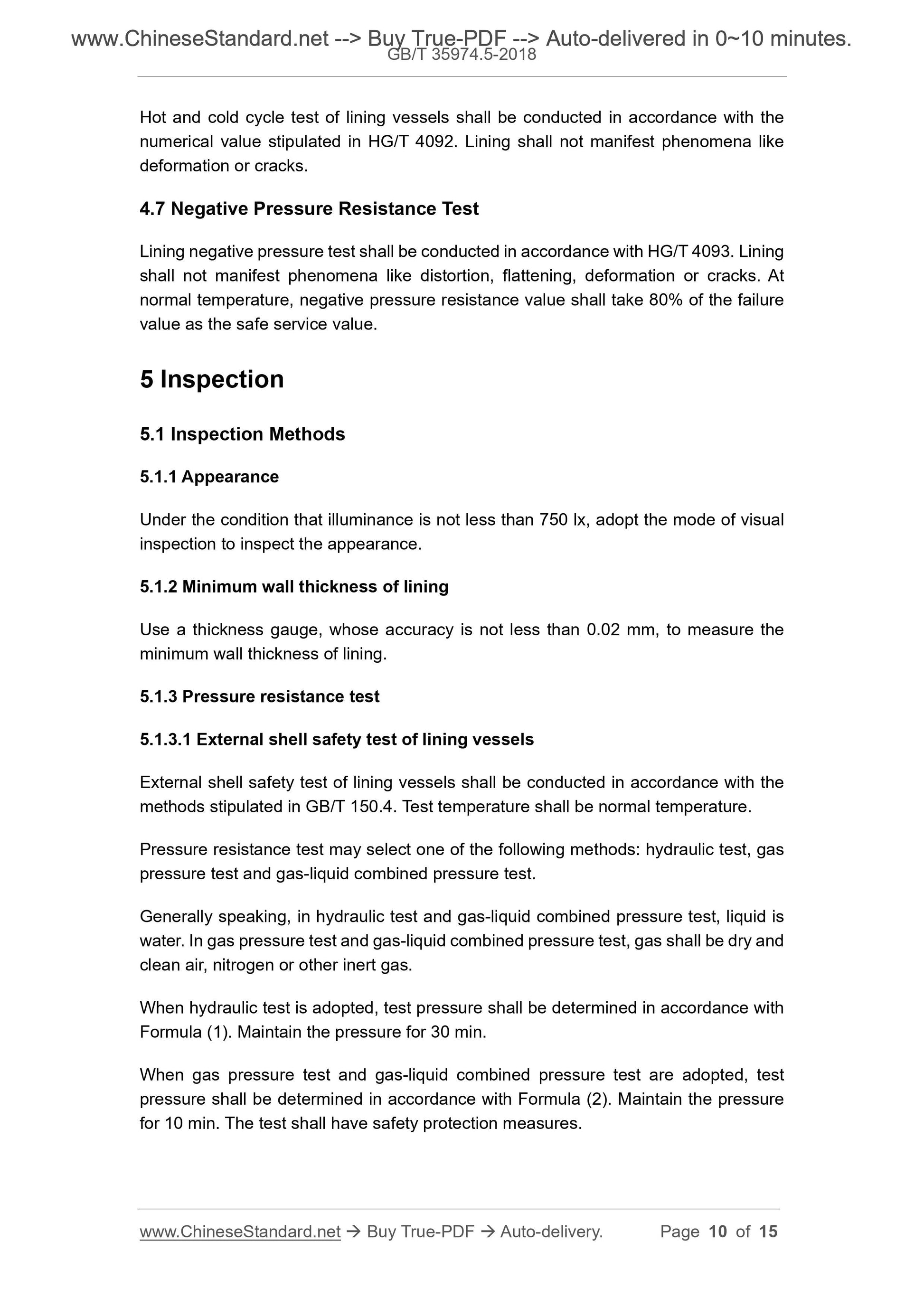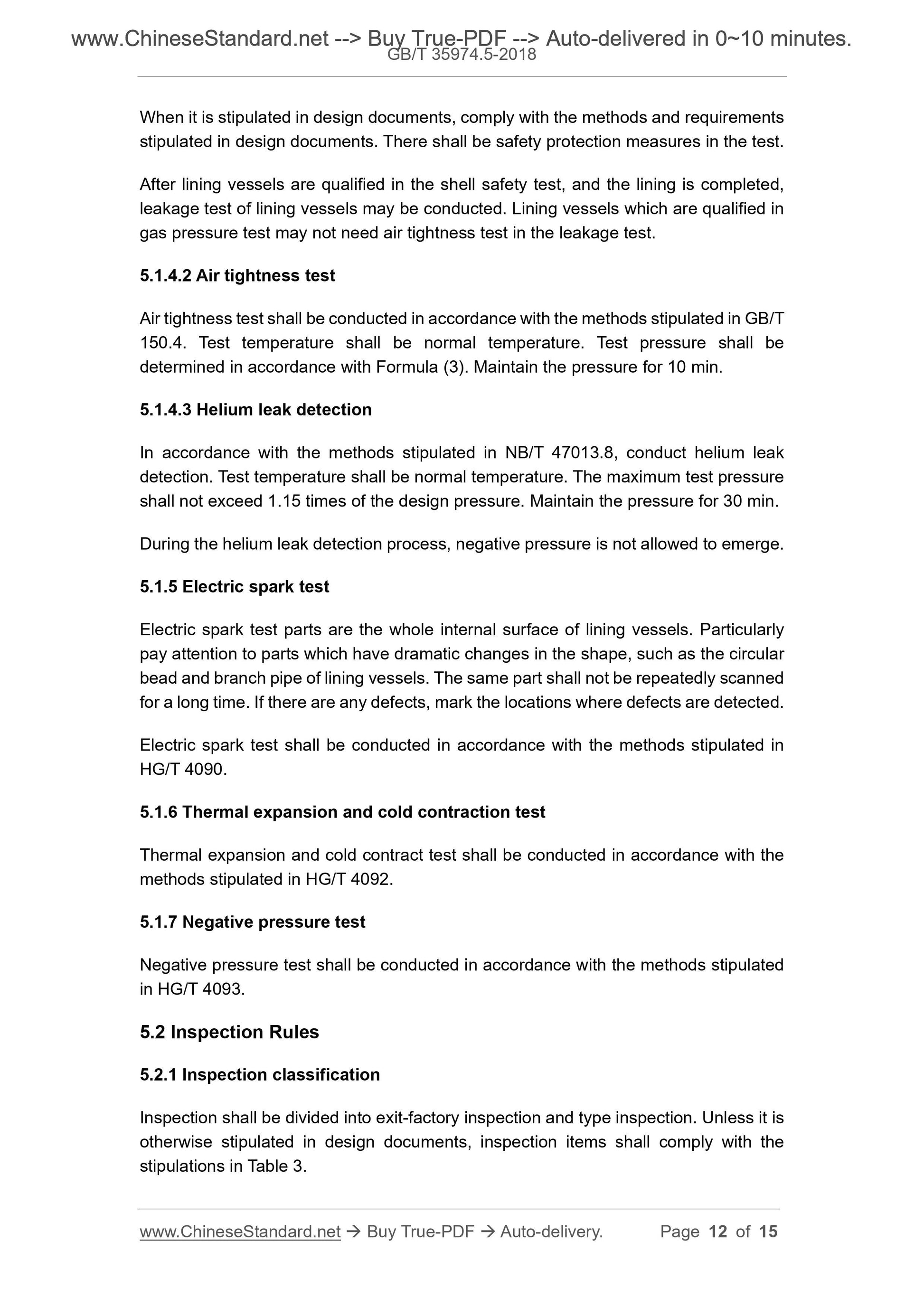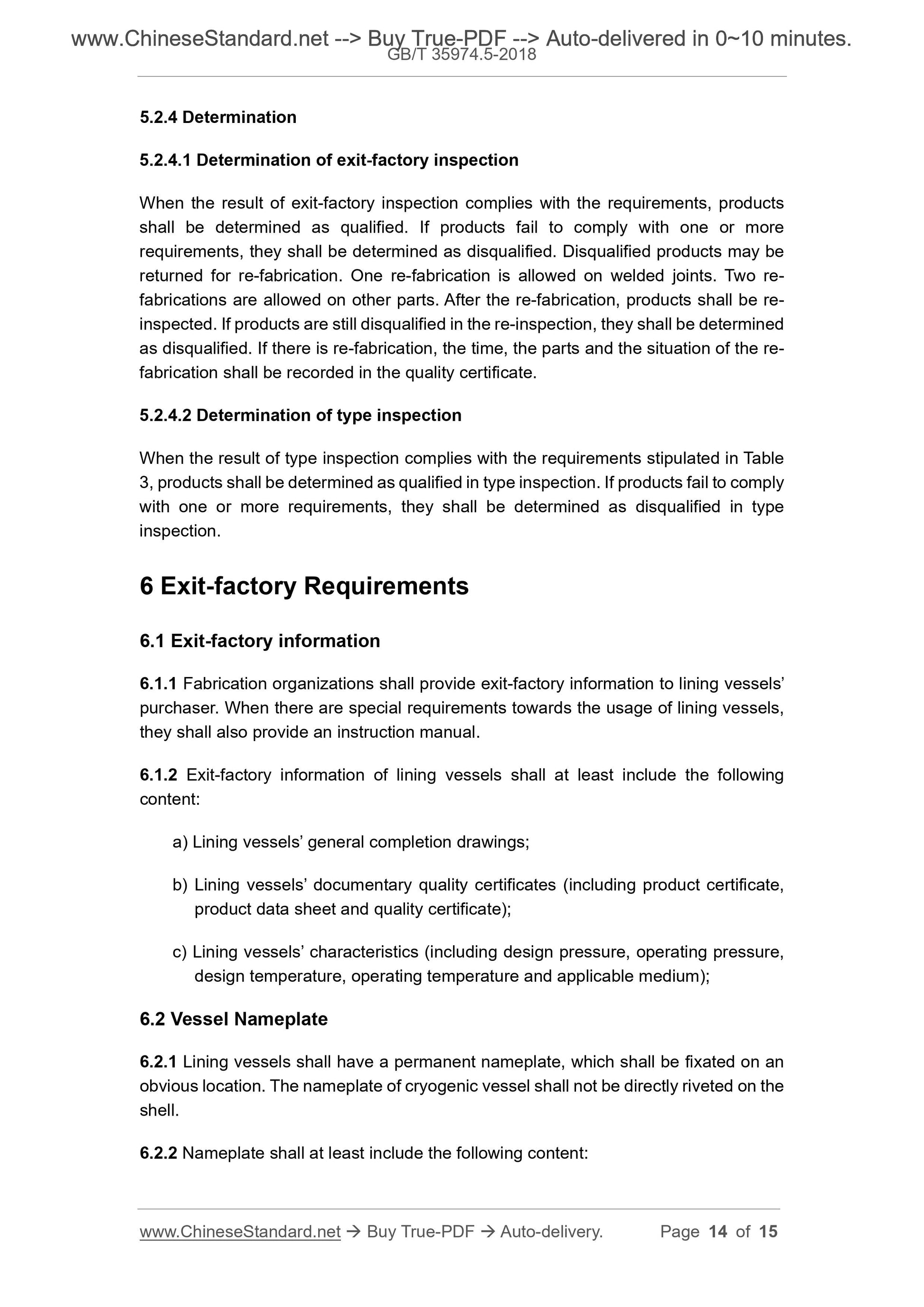1
/
of
7
www.ChineseStandard.us -- Field Test Asia Pte. Ltd.
GB/T 35974.5-2018 English PDF (GB/T35974.5-2018)
GB/T 35974.5-2018 English PDF (GB/T35974.5-2018)
Regular price
$150.00
Regular price
Sale price
$150.00
Unit price
/
per
Shipping calculated at checkout.
Couldn't load pickup availability
GB/T 35974.5-2018: Plastics and Plastic Lining Pressure Vessels - Part 5: Fabrication, Inspection and Testing for Pressure Vessels with Plastic Lining
Delivery: 9 seconds. Download (and Email) true-PDF + Invoice.Get Quotation: Click GB/T 35974.5-2018 (Self-service in 1-minute)
Newer / historical versions: GB/T 35974.5-2018
Preview True-PDF
Scope
This Part of GB/T 35974 specifies the fabrication, technical requirements, testing andexit-factory requirements of pressure vessels with plastic lining.
This Part is applicable to pressure vessels with plastic lining, which are fabricated
through the processing procedures of welding, rotational molding and winding sintering.
Basic Data
| Standard ID | GB/T 35974.5-2018 (GB/T35974.5-2018) |
| Description (Translated English) | Plastics and Plastic Lining Pressure Vessels - Part 5: Fabrication, Inspection and Testing for Pressure Vessels with Plastic Lining |
| Sector / Industry | National Standard (Recommended) |
| Classification of Chinese Standard | G94 |
| Classification of International Standard | 71.120; 83.140 |
| Word Count Estimation | 14,113 |
| Date of Issue | 2018-02-06 |
| Date of Implementation | 2018-09-01 |
| Issuing agency(ies) | State Administration for Market Regulation, China National Standardization Administration |
Share
